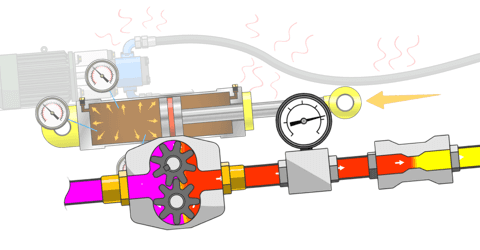After setting the relief pressure I was curious at restriction pressure and put it at return port of the control valve to gauge no load pressure. The gauge was a 5000 PSI so the difference between 50 and 75 would be tiny. All I cared about was that the pressure was low. And it was.
Folks, to clarify my point... I am not suggesting using small hoses, fittings, etc is the right thing to do. I am simply saying in real life of a log splitter it is not nearly as detrimental as some believe it is. Unless it is severely restricted this is not going to be the "aahaa" moment that noticeably changes the speed of your splitter.
Folks, to clarify my point... I am not suggesting using small hoses, fittings, etc is the right thing to do. I am simply saying in real life of a log splitter it is not nearly as detrimental as some believe it is. Unless it is severely restricted this is not going to be the "aahaa" moment that noticeably changes the speed of your splitter.


